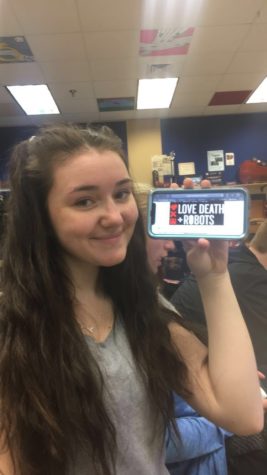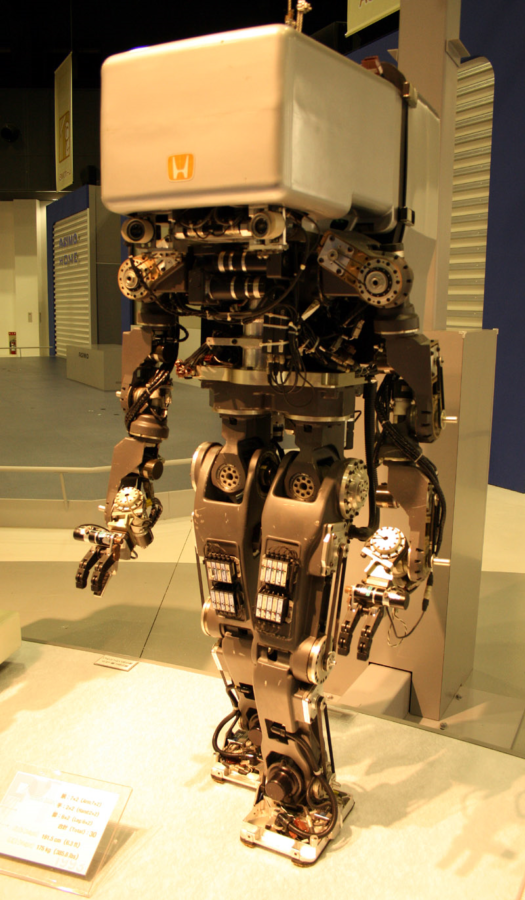Love, Death, and Robots
Netflix’s latest avant guard, risky serial experiment takes viewers by storm
Morio [CC BY-SA 3.0 (http://creativecommons.org/licenses/by-sa/3.0/)]
This Honda robot could easily evolve through further experimentation to be self aware and full of personality just like in episode two
![Taro the Shiba Inu [CC BY 2.0 (https://creativecommons.org/licenses/by/2.0)]](https://LafayetteLedger.org/wp-content/uploads/2019/04/image-2-475x356.png)

As I sat down to watch the work of art, the first thing that struck me was how prepared I was for there to be another episode following the same characters and storyline. I found myself starting Episode 2 wrought with anticipation, only to see three robots wandering through the wasteland of a city rather than episode one’s commentary on sentience based around a sci fi dragon in a fighting ring. For only a moment, I was heartbroken. I wanted more of the first episode until suddenly I was getting lost with our new friends, the Three Robots. It was a story just as captivating as episode one; and the more I watched the more dumbfounded I was that a Netflix show could be so incredibly artistic and well made.

Each of the 18 episodes are animated. Some of these animations teeter unassumingly on the edge of the uncanny valley while
others slam viewers with heavily stylized visuals ranging from traditional Japanese anime to a Borderlands-esque comic book feel (Episode 12 mainly- it’s a good one).
The thing the episodes have in common isn’t remotely their story, but rather their goal of addressing thought experiments: fantastical “What if–” scenarios of boundlessly creative proportions. Stories throughout the season take viewers to time loops and the very serious implications of werewolves assisting America in Afghanistan conflicts. They provide just enough backstory and closure to allow viewers to build what they think will happen next, but then the episode ends. The frustrating aspect of having no predestined story path dissipates quickly and allows viewers to build their own perfectly subjective futures for each half hour epic, and that’s why it works.
Among the glowing compliments to be bestowed upon LDR lie some minor flaws. the main issue, which is

to be expected for a show with a different crew and story per episode, is an occasional inconsistance in quality. Once in a while, certain visual effects feel off or half baked, but the episode after is flooring in its impeccable design. This is, by no means, a reason to discredit the entire production but is rather a minor annoyance.
As a whole, the voice acting and narrative makes up for the few visual rough patches throughout the show. Beyond this are story elements of sometimes oversexualizing women and letting violence and gore act as central elements of episodes rather than “tastefully” added items with real narrative value. While that is not a problem for everyone, the presence of such blatant nudity and internals flying across one’s screen definitely has the ability to narrow the target audience.
A common view at this point is that the show should have focused its budget on the established and renowned science fiction authors like Peter F. Hamilton and Alastair Reynolds. Had Netflix made this move, some of the shorter, silly, and forgettable episodes would be replaced with a few more thought provoking and impactful episodes. The result as it stands in season one, is positive. A recommendation for prospective viewers is to make a quick Google search and find a list of the best episodes. Thanks to the completely standalone progression of the episodes, Netflix patrons won’t be missing anything massive. Next season, the communal hope is that our lovely benefactors will see the pleas for better production and meaningful stories and limit the episode count to release an even better Love Death & Robots.






